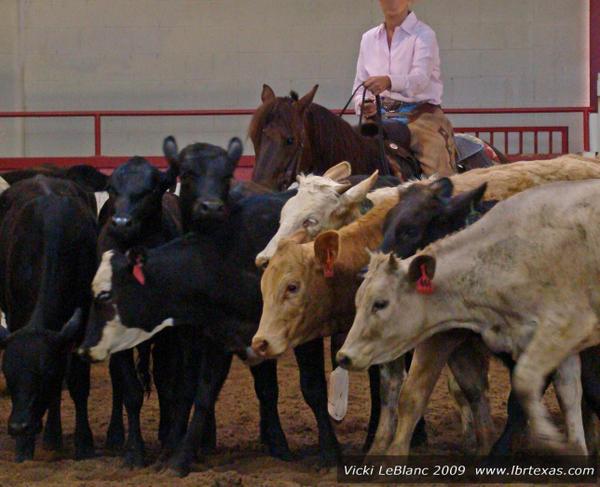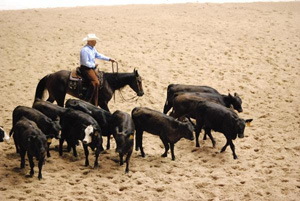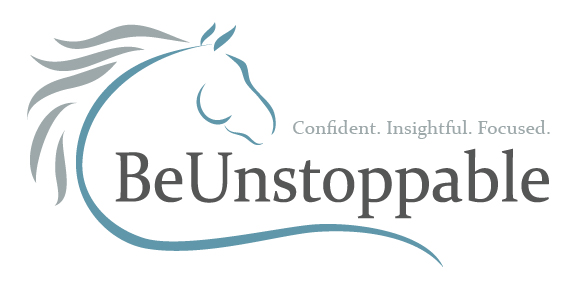
How to Guide Your Horse on the Cut With One Hand
When guiding your horse with one hand in the herd (with fast cattle sometimes!) smoothness and accuracy can be a challenge.

That’s because sometimes in the heat of fast action, cues can get confusing for the horse.
You see, early in a cow horse’s training career, he is taught to turn with a specific sequence of cueing.
A trainer typically initiates the turn with a “pull” of a direct rein. (Direct rein means if you’re turning right, you would pull the right rein.) That direct rein points the horse’s nose initially in the direction of the turn and begins the turn. Then the turn is completed with offside rein and leg pressure to bring the shoulders across the hind quarters to complete the pivot.
Sometimes amateurs and non-pros (and trainers, too!) can have a challenge steering their horse in the herd with one hand, instead of two hands.
Here’s why.
When you neck rein with one hand during a cut, if the rider is unaware, the horse’s nose ends up inadvertently pointed in the wrong direction at the beginning of the turn. The horse gets confused and becomes “bound up”.
That’s because the horse responds to pressure in his mouth first, instead of pressure on his neck. He feels the offside rein shorten and “thinks” it’s a direct rein cue. He points his nose toward the offside shortened rein, but unfortunately, it’s opposite the direction of the turn.
Then, the harder you try to neck rein, the more the offside rein shortens and pulls the horse’s nose even more in the wrong direction.
The secret to an accurate turn is to always make sure your horse’s nose is pointed either straight ahead or in the direction you want to go before you apply the offside rein and leg.
Here’s how …
To initiate the turn, first lift your hand to lightly connect to your horse’s mouth. (This is one of the reasons we back horses right before walking to the herd … so they get back off the bit easily.)
Next, place a soft calf/leg pressure on the horse’s side in the direction you want to pivot. The key words here are “soft pressure.” Most horses will respond with a tilt of the nose toward the same side where you lightly touch your calf/leg to your horse’s ribs.
Only THEN, when the nose is faced forward or pointed toward where you want to go, do you apply offside rein and leg pressure to initiate and follow through with the turn.
Needless to say, this sequence of rider cues requires muscle memory when things happen quickly in the herd.
You can make this an automatic skill by practicing guiding your horse outside of the herd with one hand. Take your time. Practice slowly and frequently to get the sequence down:
-
Look where you want to go.
-
Have light contact with your horse’s mouth.
-
Apply just enough soft calf pressure on your horse’s ribs to tilt his nose in the direction of the turn.
-
Apply neck rein and off side leg pressure to initiate and complete the turn or pivot.

